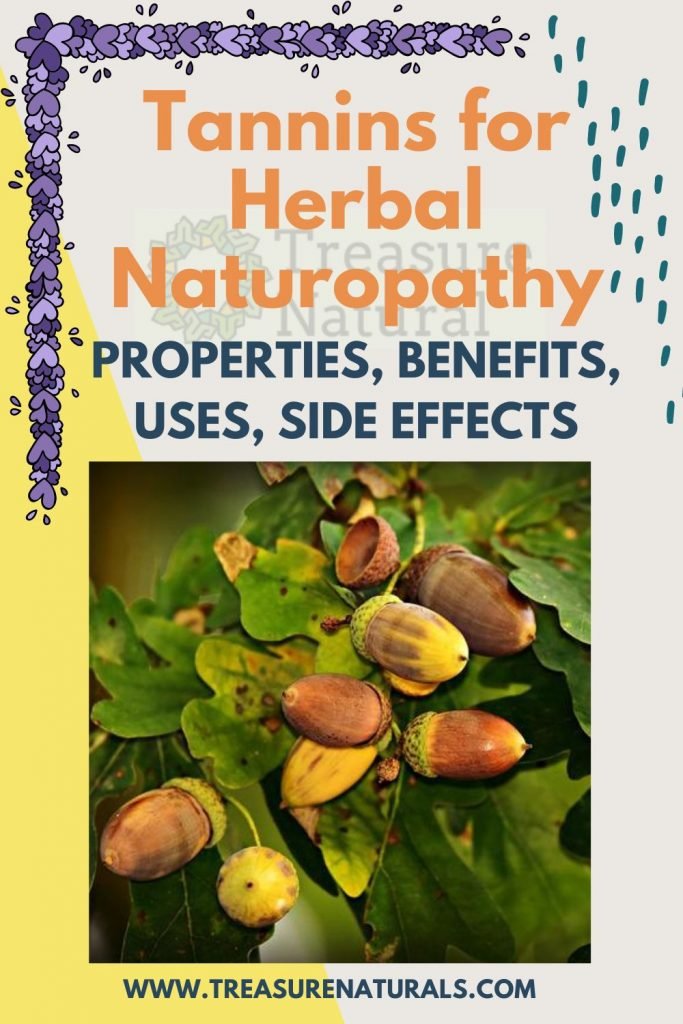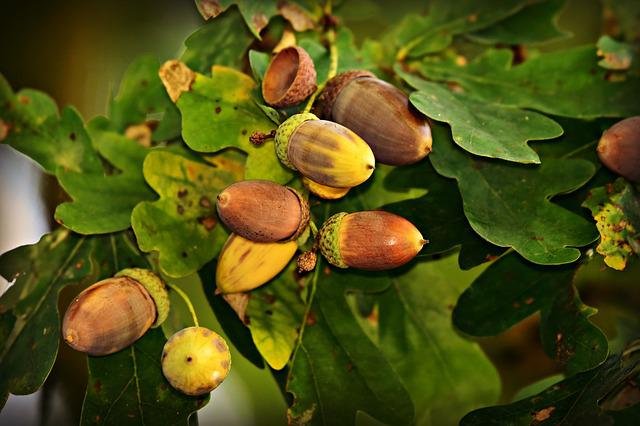
Tannins are polyphenolic substances synthesized in plants in particular at the level of the bark. The biological role of tannins is that of defense.
Tannins are molecules synthesized by plants and endowed with astringent, antidiarrheal, anti-inflammatory and antibacterial activity.
What are tannins
Tannins are polyphenolic substances synthesized in plants, which color the plant tissues with a reddish brown.
These are non-nitrogenous compounds, originating from the specialized metabolism of plants and widely spread in the plant kingdom.
In fact, many plants produce tannins at the level of roots, rhizomes, bark and also leaves, immature fruits and seeds.
Tannins are classified according to their characteristics in hydrolysable tannins and condensed tannins. The hydrolysable tannins consist of a polyalcohol, generally glucose, which can be bound to gallic acid or ellagic acid: in the first case, gallotannins (gallic tannins) are formed, in the second ellagitannins (ellagic tannins).
The condensed tannins, on the other hand, are made up of flavonoids (catechin and epicatecin), polyphenols with an antioxidant action. They are also called protoanthocyanidins since their oxidation, catalyzed by acids, gives rise to anthocyanidins. vegetable pigments that color flowers and fruits.
Properties of tannins
The main property of tannins is to precipitate or denature proteins by exerting an astringent action.
The taste of tannins is due precisely to this ability to precipitate proteins and is characteristic of some red wines. The tannic wine, that is the wine with too many tannins, is well recognizable by the astringent sensation on the tongue and mucous membranes of the mouth, given to the high presence of tannins in the grapes, in particular in the skin and in the seeds.
Tannins also have properties:
- Vasoconstrictor;
- hemostatic;
- anti-inflammatory;
- they are able to reduce glandular secretion.
What are tannins for?
The biological role of tannins is to defend the plant. Their expression occurs above all at the level of roots, bark, leaves and immature fruits which, thanks to the presence of tannins, take on an unpleasant and unappetizing taste for predators.
Man has practically always used tannins for their properties; tannins are for example exploited for:
- Leather tanning;
- make inks;
- dyeing and printing fabrics;
- the food industry;
- clarify beers and wines.
Herbal drugs rich in tannins are used in herbal medicine and phytotherapy to treat various ailments.
Benefits of tannins
Tannin drugs are used both internally and externally for their properties and benefits.
The astringent action of tannins reduces the pemeability of membranes and capillaries due to the precipitation of albumin. This action causes a sort of superficial protective barrier to form on the cells, which isolates them and defends them from irritants and pathogenic microorganisms.
For this reason, in addition to their astringent activity, tannins also boast anti-inflammatory and antimicrobial properties.
Internally the tannins are used in case of:
- Diarrhea;
- small bleeding from the gastrointestinal system;
- to treat internal hemorrhoids.
For topical use, however, tannins are useful in case of:
- Inflammation of skin and mucous membranes;
- small burns;
- bleeding;
- in case of hypersecretion of sweat and sebaceous glands.
Where are the tannins found
Tannins are present in various plant species that produce these substances at the level of bark, roots, leaves and immature fruits. Herbs, drinks and foods rich in tannins are characterized by an astringent and bitter taste, like that of some red wines, coffee, tea.
The herbal drugs most used in herbal medicine and phytotherapy for their high content in tannins are the leaves of witch hazel, bearberry and chestnut, the leaves and the husk of the walnut, the seeds of horse chestnut, the rhizome of the tormentilla, the galls of oak and the bark of various species of the genus Quercus, including oak, downy oak and English oak.
Other drugs rich in tannins are represented by the leaves of bramble and plantain, the rhizome of bistorta and the bark of carob and elm.
You use tannins
The advantages that man has been able to draw from this ability are many, among these the oldest is linked to the tanning of leathers for their processing and transformation into leather and hides.
In phytotherapy and herbal medicine to enjoy the benefits of tannins, vegetable drugs are used that are rich in them and which are therefore used, as we have seen, in the treatment of diarrheal stages, in case of skin inflammation, hemorrhoids, in skin problems in which has a sebaceous hypersecretion and to combat excessive sweating.
Tannins in cosmetics
The astringent and anti-inflammatory action of tannins on the skin, brings benefits in case of inflammation of the skin and mucous membranes. Tannins are therefore used in many preparations for cosmetic use: in mouthwashes for inflammation of the mouth, in creams for the treatment of acne and excess sebum and in shampoos for oily hair and dandruff.
Contraindications of tannins

Tannins are normally found in many plants and have no particular contraindications or side effects. In high doses, however, they can cause irritation of the skin and mucous membranes.
The intake of tannins can also hinder the absorption of some nutrients including iron, zinc and vitamins.






